Amarone della Valpolicella, commonly referred to as Amarone, is a renowned Italian red wine originating from the Valpolicella region in Veneto, north-east Italy. This exceptional wine is produced by a special winemaking process where ripe grapes, primarily Corvina and Rondinella varieties, are left to dry for several weeks in temperature-controlled rooms. As the grapes lose moisture and become raisin-like in texture, their flavors and sugar content become more concentrated, giving the wine its distinct rich and intense taste.
The Amarone designation operates under the strict guidelines of the DOCG, or Denominazione di Origine Controllata e Garantita, to ensure a high level of quality across all Amarone wines. There are three main geographical subzones within Valpolicella: Classico, Valpantena, and ‘Est’. Each of these areas adds to the unique characteristics and terroir of the wine produced. Appreciated for its bold flavors and complexity, Amarone della Valpolicella has solidified its place among Italy’s finest red wines and continues to gain recognition and admiration on an international level.
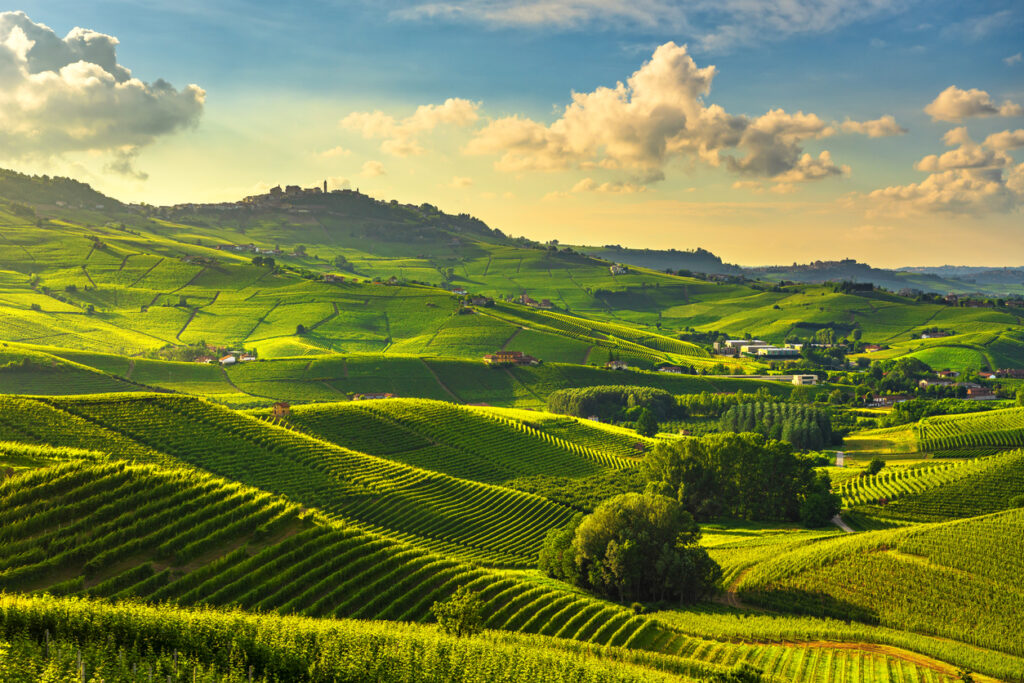
History of Amarone della Valpolicella
Origins
Amarone della Valpolicella is an Italian red wine that originated in the Valpolicella region. The first bottle of Amarone was produced in 1938, although its precursor, Recioto, dates back to the Roman era. Amarone is made by ripening the grapes longer after being harvested, allowing them to raisin and develop a unique flavor profile.
Evolution
Over the years, Amarone della Valpolicella has evolved as a wine style and gained worldwide recognition. In its early days, the wine was mainly produced using traditional grape varieties like Corvina, Corvinone, and Rondinella. However, some producers have been blending Amarone grapes with other varieties like Cabernet Sauvignon, which is allowed up to 15% according to DOCG rules. This blending has given rise to wines like Ripasso della Valpolicella, which have some Amarone features while still retaining the characteristics of a Valpolicella wine.
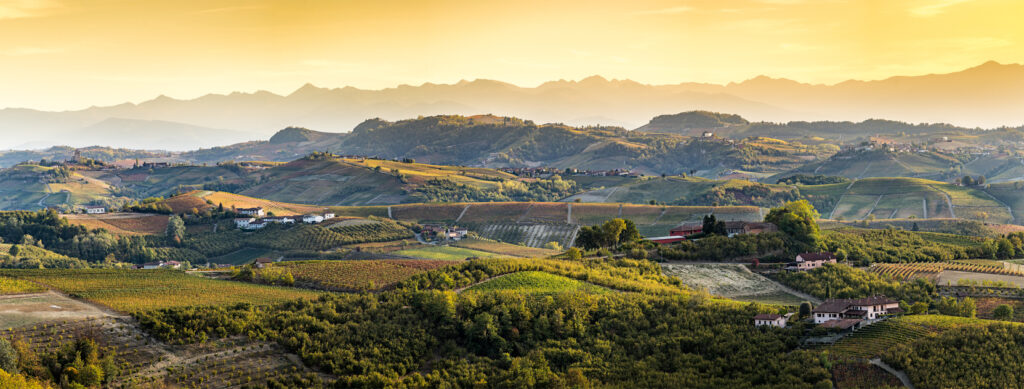
Recognition
The Amarone della Valpolicella wines were granted Denominazione di Origine Controllata (DOC) status in December 1990. Later, on 4th December 2009, the wines were promoted further, alongside Recioto della Valpolicella, to the status of Denominazione di Origine Controllata e Garantita (DOCG). This elevation in status reflects the recognition and appreciation of Amarone’s quality and uniqueness in the global wine market. In 2008, the total production of Amarone and Recioto combined for sale was 8.57 million bottles.
Production Process
Grape Varieties
Amarone della Valpolicella is a rich, dry red wine produced in the Valpolicella region of Italy. The primary grape varieties used in this wine are:
- Corvina (45-95%): This grape contributes to the wine’s structure and body.
- Rondinella (5-30%): This grape adds fruity and herbal notes to the wine.
Other approved red grape varieties may also be included but in smaller proportions.
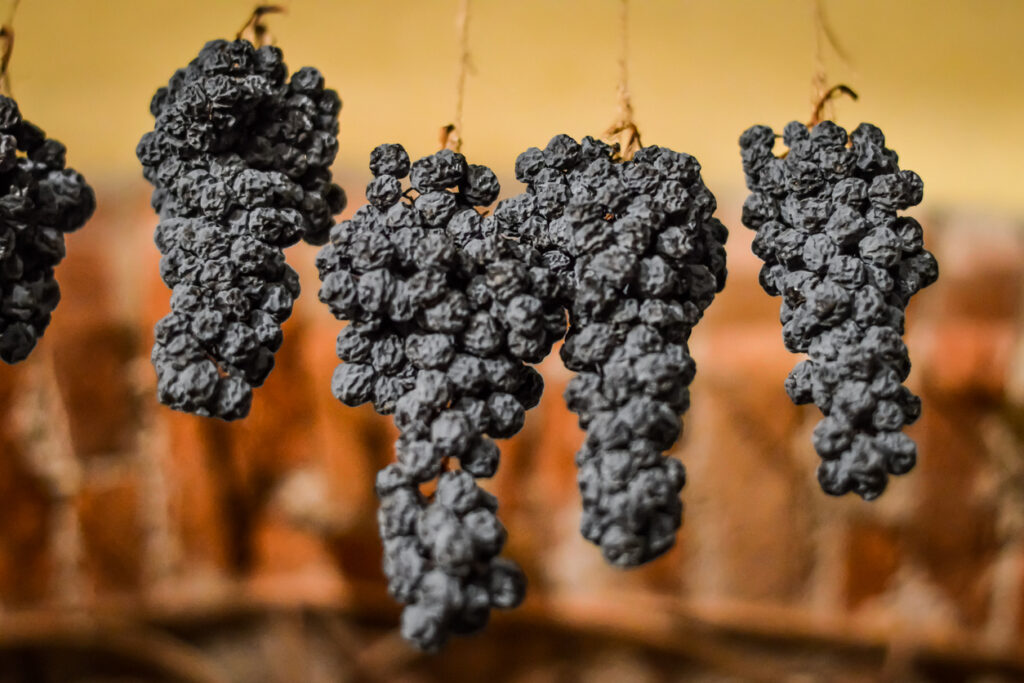
Appassimento Technique
The unique character of Amarone comes from the appassimento technique, a process that involves the partial drying of grapes before fermentation. Grapes are carefully selected and placed in well-ventilated spaces, allowing them to slowly lose water content while concentrating sugars and flavors. This process often lasts for several months, enabling the development of complex and rich flavors in the final wine.
Fermentation
After the appassimento process, the semi-dried grapes are gently crushed and fermentation begins. As the high sugar content in the grapes leads to a longer fermentation process, the end result is a high-alcohol wine with intense flavors. Fermentation temperatures are usually maintained on the lower side to preserve the aromatic compounds, and the process can take up to 30-50 days to complete.
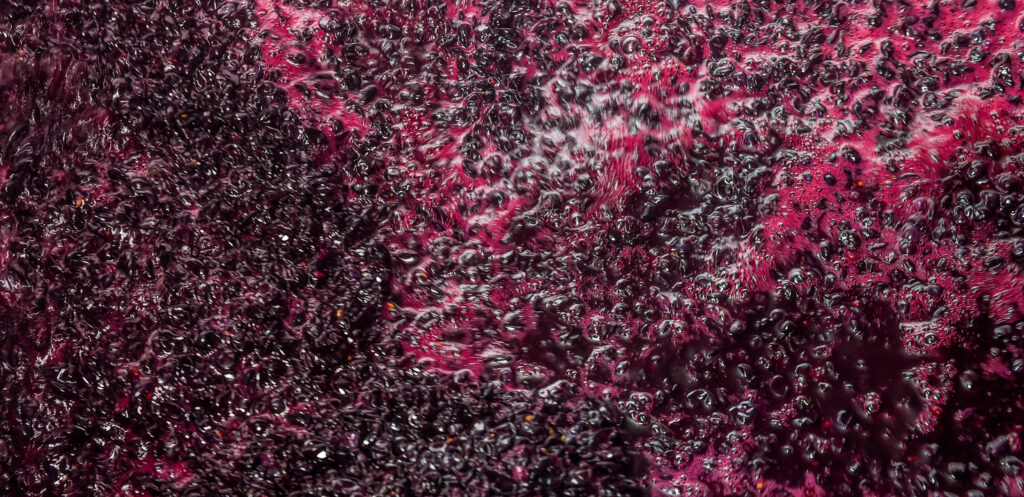
Aging
Amarone della Valpolicella undergoes a long aging process, typically lasting from two to four years, depending on the producer and vintage. The wine is often aged in large oak barrels, which impart tannins and subtle flavors, helping to develop the wine’s unique character. Some winemakers use smaller barrels or a combination of both to achieve a specific profile. After the aging process is complete, the wines are bottled and allowed to rest for additional months before release. This patient approach ensures that the Amarone wine develops its characteristic complexity, richness, and elegance.
Tasting Notes
Aroma
Amarone della Valpolicella is known for its bold and complex aromas. The nose of the wine typically presents with cherry liqueur, black fig, carob, cinnamon, and plum sauce notes. Subtle hints of green peppercorn, chocolate, and crushed gravel dust can also be detected, making it an intriguing wine to explore on the olfactory level.

Flavor Profiles
The rich and intense flavors of Amarone are what make it stand apart from other red wines. The predominant flavors include jammy black cherry, blackberry, dried fruit, and tobacco, accompanied by underlying notes of dark chocolate, coffee, and spices. Despite the depth of flavor, Amarone wines can also present a certain level of freshness, with some showing hints of green herbs and mineral flavors. The balance of fruit, acidity, and tannins is essential in creating a harmonious wine experience.
Texture
Amarone della Valpolicella is a full-bodied wine with a rich texture, which can be attributed to its unique winemaking process. Grapes are dried post-harvest, concentrating their sugars and resulting in a wine with higher levels of alcohol, typically ranging from 15% to 16%. The drying process also contributes to the wine’s velvety and smooth mouthfeel. Well-balanced Amarone wines will showcase firm but fine-grained tannins, lively acidity, and ample fruitiness, creating a harmonious and enjoyable drinking experience.
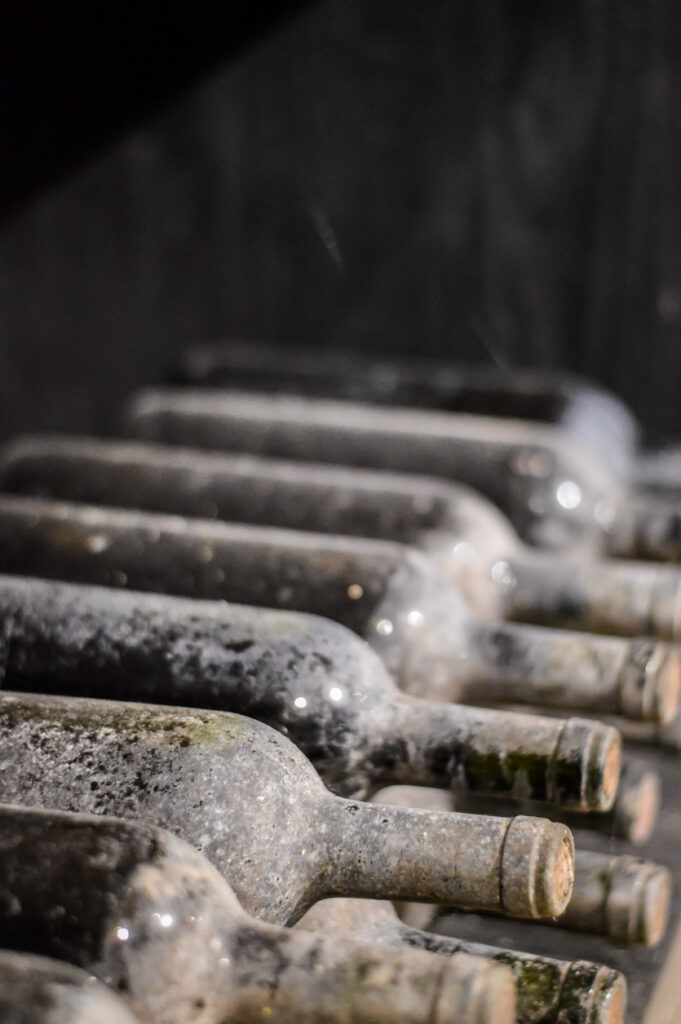
Aging Potential
Amarone wines have considerable aging potential, with many examples capable of aging gracefully for 20-30 years or longer. The best examples of Amarone will develop tertiary flavors like leather, tobacco, and truffle as they age, complementing the fruit and spice notes in the wine. The wine’s strong acidity and tannic structure contribute to its longevity, allowing it to evolve and improve over time. When considering aging Amarone wines, it’s essential to store them in appropriate conditions, with consistent temperature and humidity levels, to ensure optimal development.
Pairing and Serving Suggestions
Food Pairings
Amarone della Valpolicella pairs well with a variety of foods, enhancing their flavors or providing a complementary contrast. Some suggested food pairings include:
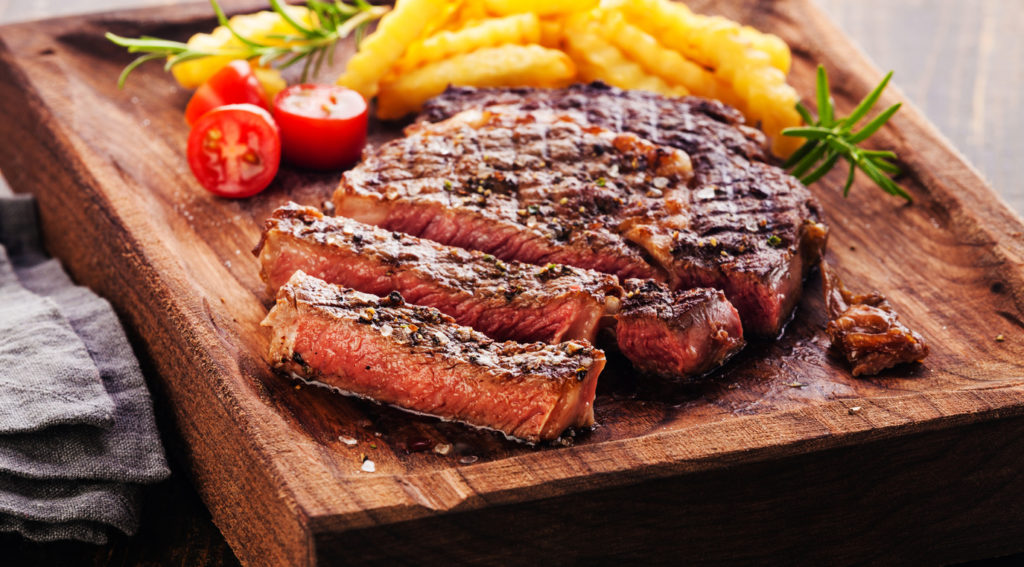
- Meaty dishes: Grilled steaks, burgers, and game meats are excellent choices, as the rich flavor of Amarone can stand up to these hearty dishes.
- Pasta and risotto: Dishes containing tomato sauce or rich, savory ingredients pair nicely with Amarone. Examples include pasta with meat ragú or mushroom risotto.
- Cheese: Aged, hard cheeses such as Parmesan, Pecorino Romano, or Gouda can balance the fruity intensity of Amarone.
- Pizza: The acidity and tannins in Amarone cut through the richness of tomato sauce and cheese, making it a great companion to various types of pizza.
In some instances, Amarone can also be paired with certain fish dishes, such as stewed eel cooked in a sweet soy sauce, where the soy sauce is the key to creating the pairing.
Serving Temperature
To fully enjoy Amarone della Valpolicella and appreciate its complex aromas and flavors, it’s essential to serve it at the proper temperature. The ideal serving temperature for Amarone is around 18-20 °C (64-68 °F). Serving the wine too cold may mute its flavors and aromas, while serving it too warm can emphasize the alcohol, making it taste harsh.
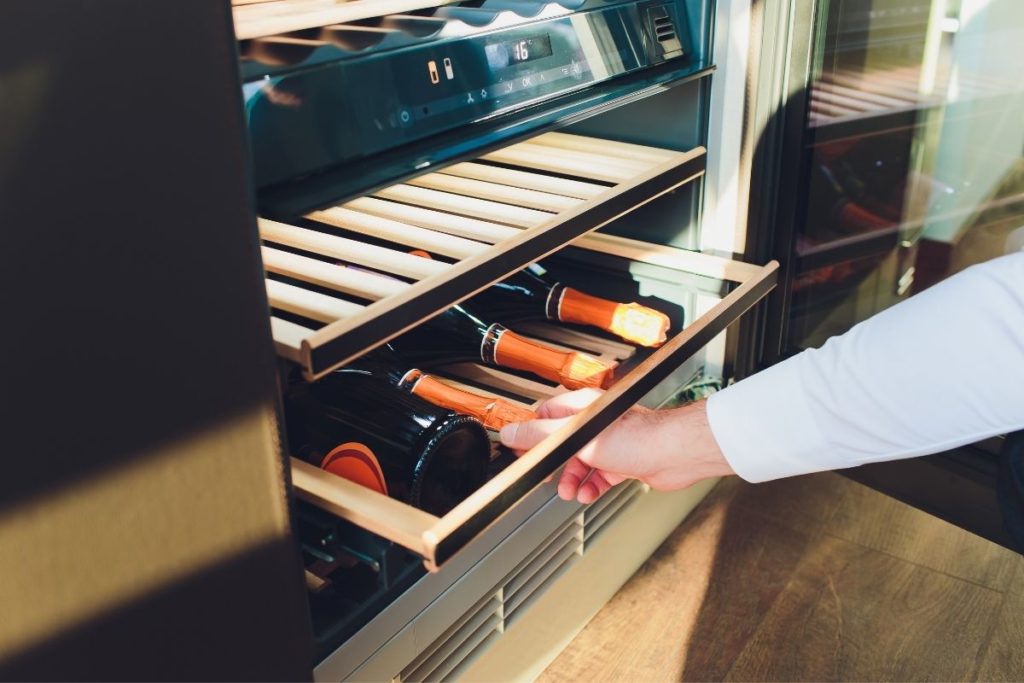
To achieve the optimal serving temperature, consider the following steps:
- If the Amarone has been stored at room temperature, place it in the refrigerator for 20-30 minutes before serving.
- If the Amarone has been stored in a cooler environment, such as a wine cellar, you may need to let it sit at room temperature for a short time to reach the desired temperature.
- When pouring Amarone, give it a gentle swirl in the glass to aerate it, allowing its complex aromas to unfold.
By following these guidelines for food pairings and serving temperature, you can enhance the enjoyment and appreciation of Amarone della Valpolicella for yourself and your guests.
Amarone della Valpolicella Styles
Amarone della Valpolicella is a unique and rich Italian red wine produced in the Veneto region. The key distinctive factor of this wine is the use of the appassimento process, where grapes are partially dried out before fermentation. There are different styles of Amarone della Valpolicella, which are distinguished by specific production methods and aging techniques. In this section, we will explore two such styles: Classico and Riserva.
Classico
Amarone della Valpolicella Classico refers to Amarone wines produced in the traditional Classico zone of Valpolicella in Veneto. This area is known as the original region of Amarone production, which was later expanded to other sub-zones. Classico wines are crafted using similar grape varieties: Corvina, Rondinella, and Corvinone.
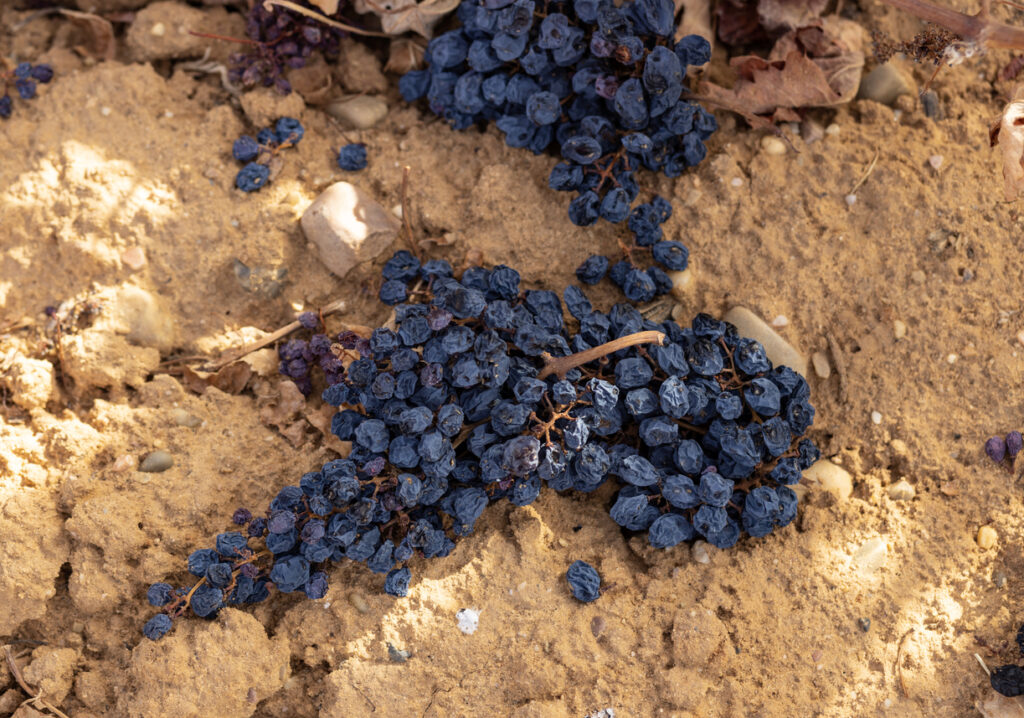
Characteristics of Classico Amarone:
- Originates from the Classico zone of Valpolicella
- Utilizes the traditional appassimento process
- Typically crafted with Corvina, Rondinella, and Corvinone grapes
The Classico wines are typically revered for their depth of flavor, complexity, and layers of dried fruit and spice notes. They are a popular choice for wine enthusiasts seeking a truly enjoyable and robust Amarone experience.
Riserva
In the world of Amarone della Valpolicella, Riserva signifies a wine that adheres to more stringent production criteria and extended aging periods. These wines maintain a high level of quality and complexity, ensuring a superior tasting experience for discerning wine connoisseurs.
Characteristics of Riserva Amarone:
- Longer aging process (usually at least four years)
- Adheres to stricter production criteria
- Highly valued for their complexity and flavor profile
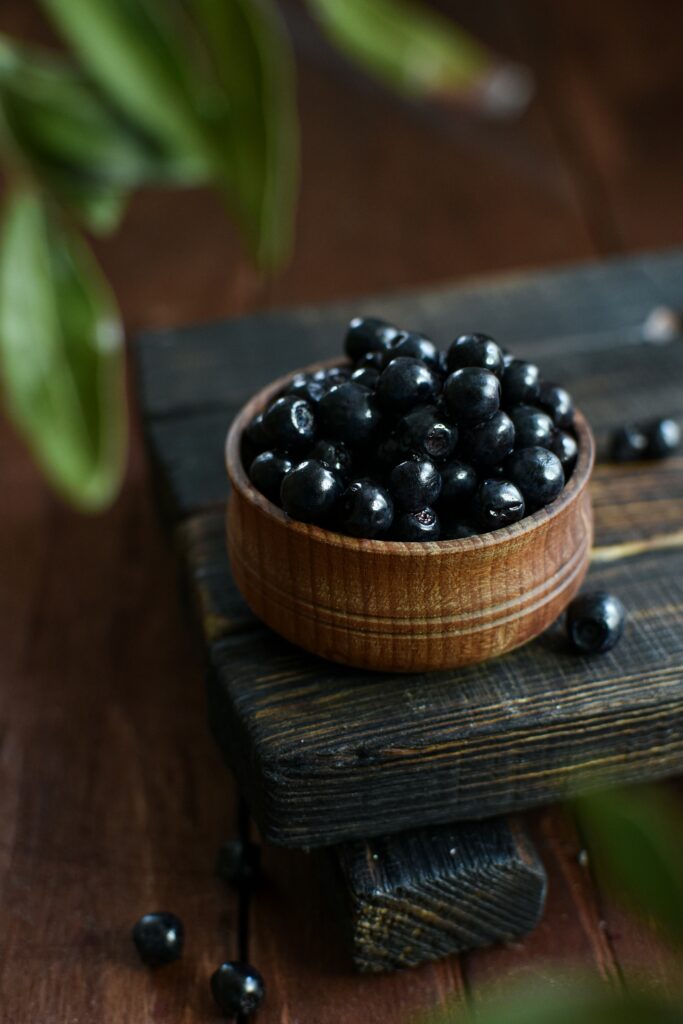
Riserva wines undergo an extended period of aging, usually at least four years. This allows for the development of more intense flavors, aromas, and a richer mouthfeel compared to their Classico counterparts. The extended aging also results in greater potential for further development in the bottle. You will be rewarded if you choose to cellar your Amarone Riservas for future enjoyment.
Best Amarone Wines
Quintarelli
Quintarelli is renowned for producing some of the finest Amarone della Valpolicella wines. With a focus on tradition and quality, the winery creates exceptional wines that are cherished by fans of Amarone. Quintarelli Amarone wines are known for their rich flavors, deep color, and complex characteristics that develop over time.
- Grape varieties: Corvina, Rondinella, and Corvinone
- Aging potential: 15-20 years
Bertani Amarone della Valpolicella Valpantena
Bertani represents a benchmark in the world of Amarone wines. Their Amarone della Valpolicella Valpantena is a top-tier example of this style. This wine showcases a perfect balance of fruit flavors, acidity, and tannins. This makes it a versatile choice to pair with food or enjoy on its own.
- Grape varieties: Corvina and Rondinella
- Aging potential: 10-15 years
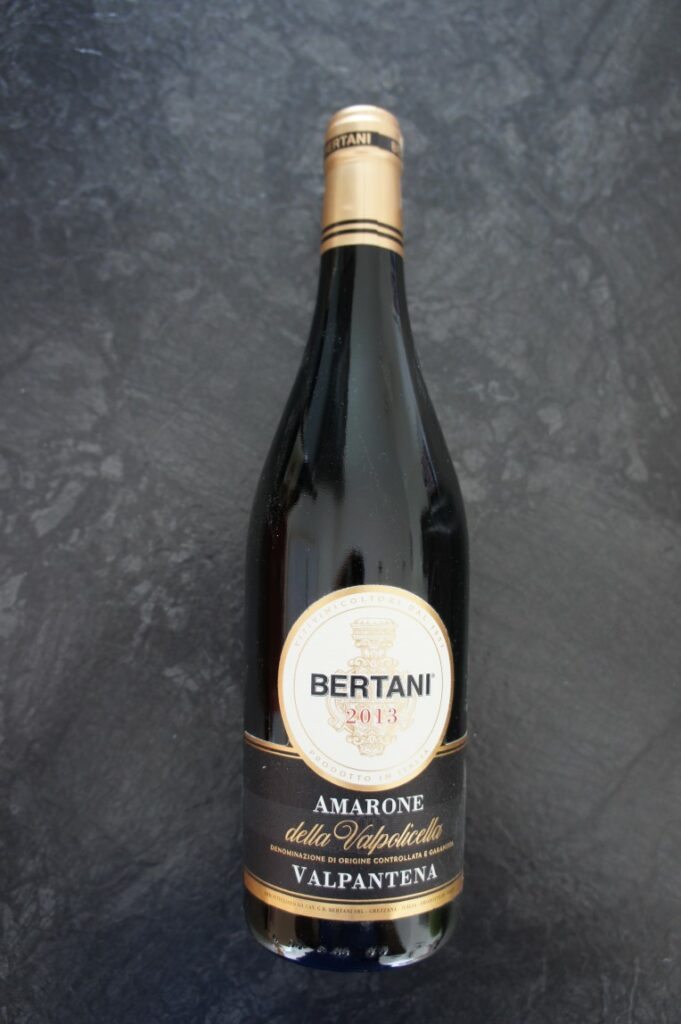
Brigaldara Amarone della Valpolicella Classico
Brigaldara is a respected producer of Amarone della Valpolicella Classico. Their wines are characterized by their structure and concentration, offering rich aromas and flavors of dried fruits, chocolate, and spices. The winemaking process at Brigaldara emphasizes the importance of high-quality grapes to create wines that age gracefully.
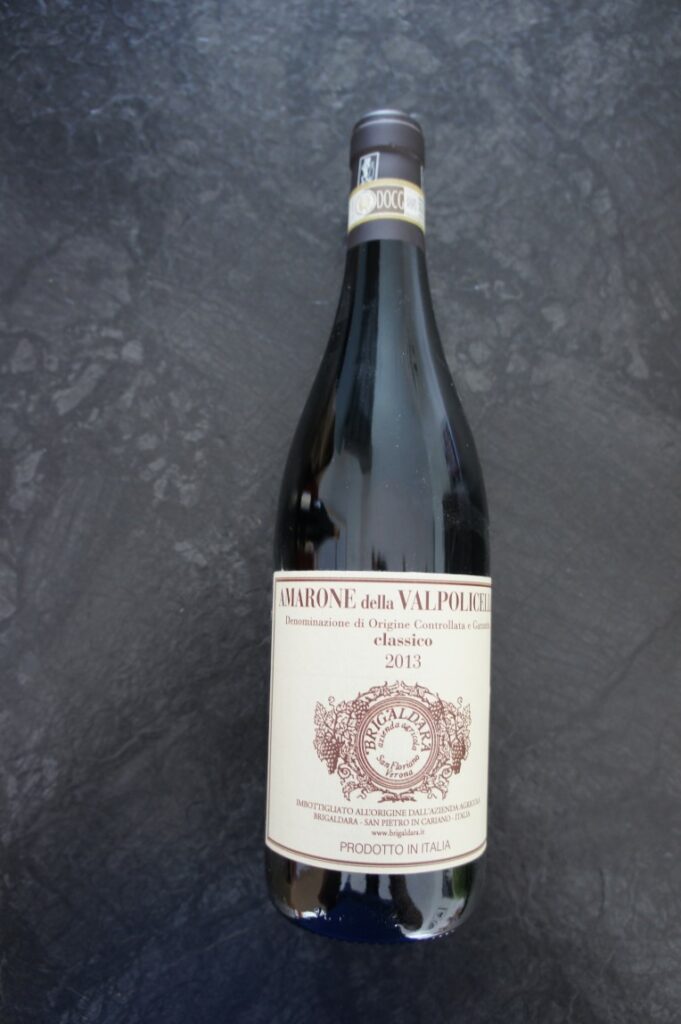
- Grape varieties: Corvina, Rondinella, and Corvinone
- Aging potential: 10-15 years

